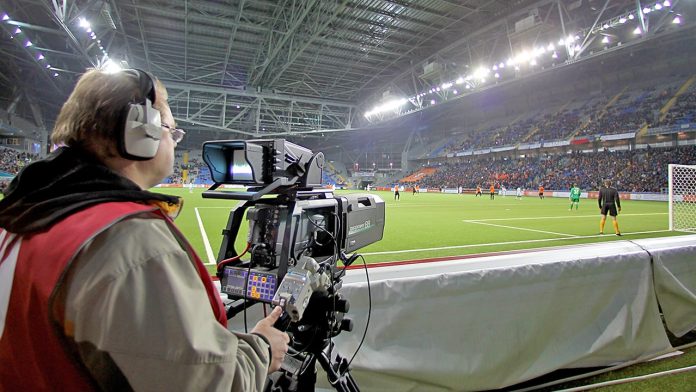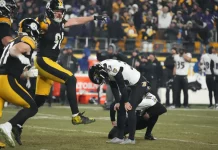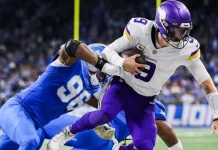By: Jim Williams
Capital Sports Network
In an era dominated by streaming giants and cord-cutting chaos, broadcast television is staging an unexpected comeback—and it’s powered by the one thing viewers still demand live: sports.
From Fox’s NFL Sundays to NBC’s Big Ten Saturdays, major networks like ABC, CBS, The CW, and even local affiliates are leaning hard into their sports portfolios to reclaim prime time and reassert their relevance in the media landscape.
MUST READS
The Sports Strategy Behind the Ratings Surge
- Fox has doubled down on its NFL and college football coverage, using marquee matchups to anchor Sunday and Thursday nights. Its deal with the Big Ten has turned Saturdays into a ratings bonanza.
- NBC is leveraging its exclusive rights to Big Ten primetime games and Sunday Night Football to dominate weekend viewership. The Peacock simulcasts are boosting digital engagement without cannibalizing linear ratings.
- ABC and ESPN are cross-promoting Monday Night Football and College GameDay, funneling viewers between platforms and maximizing ad revenue.
- CBS continues to thrive with SEC football and NFL coverage, while expanding its sports footprint with new soccer and golf deals.
- The CW, once known for teen dramas, is now airing ACC football and LIV Golf, signaling a bold pivot toward sports-driven programming.
- Local stations are capitalizing on regional loyalties—airing high school football, minor league baseball, and local college games to build community engagement and drive ad sales.
Why It’s Working
- Live sports are DVR-proof: In a fragmented media world, they’re one of the few formats that demand real-time viewing.
- Advertisers love sports: High engagement, predictable scheduling, and loyal fanbases make sports a premium buy.
- Cross-platform synergy: Networks are using sports to drive traffic to streaming apps, social media, and digital platforms.
- Cultural relevance: Sports are conversation starters, meme generators, and social glue—especially in election years and Olympic cycles.
Local Broadcast Partnerships
- Phoenix Suns & Utah Jazz: Early adopters of the “beam and stream” model—airing games on local broadcast TV and launching direct-to-consumer (DTC) apps.
- Chicago Bulls: Exploring simulcasts with WGN-TV, a CW affiliate, to expand reach beyond cable.
NHL Teams Returning to Broadcast TV
Confirmed Moves to Over-the-Air (OTA) Stations
Moving this season to broadcast television locally.
- Tampa Bay Lightning: Games now air on WXPX-TV Channel 66, branded as “The Spot – Tampa Bay 66,” with additional coverage in Orlando and Jacksonville.
- Anaheim Ducks: Moved to KCOP-MNT, a Fox-owned station in LA.
- Chicago Blackhawks: Now on Chicago Sports Network, with potential simulcasts on WGN-TV.
- Colorado Avalanche: 20 games shifted to KUSA-NBC and KTVD-MNT in Denver.
- Dallas Stars: Launched their own Victory+ free streaming service.
- Florida Panthers: Broadcasting on WSFL-CW in Miami and WHDT in West Palm Beach.
- Vegas Golden Knights: Partnered with Scripps Sports for OTA broadcasts.
- Utah Hockey Club (formerly Arizona Coyotes): Created Mammoth+ streaming platform and OTA deals.
Why the Shift Is Happening
- RSN Collapse: Bankruptcy and declining subscriptions have made traditional cable sports networks unsustainable.
- Accessibility: Broadcast TV reaches more households, especially those without cable or streaming subscriptions.
- Revenue Diversification: Teams are launching their own apps and platforms to control monetization and fan engagement.
- National Exposure: Networks like NBC are offering broader reach and promotional support.
Looking Ahead: 2025 and Beyond
With new media rights deals kicking in, 2025 marks the beginning of a golden era for broadcast television sports. Expect more primetime games, expanded shoulder programming, and deeper integration with streaming platforms. Networks are no longer just surviving—they’re thriving by turning sports into the centerpiece of their content strategy.







